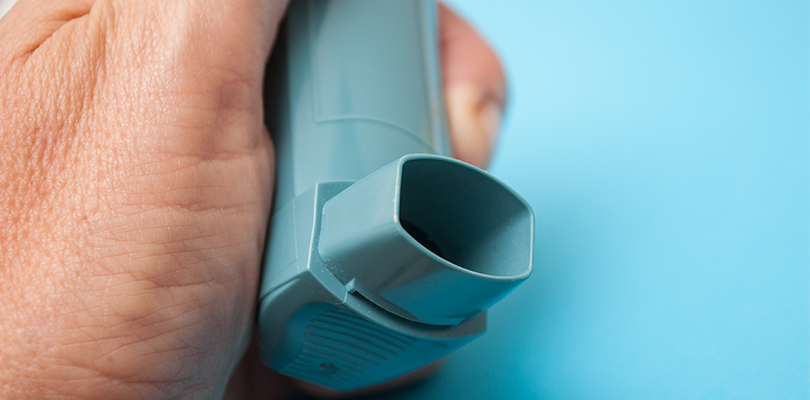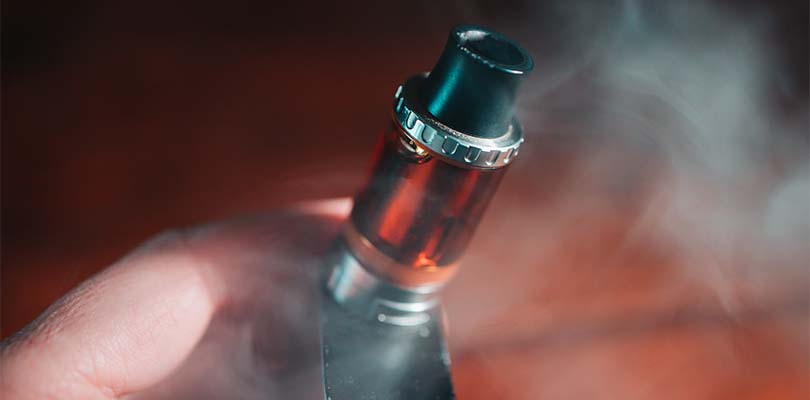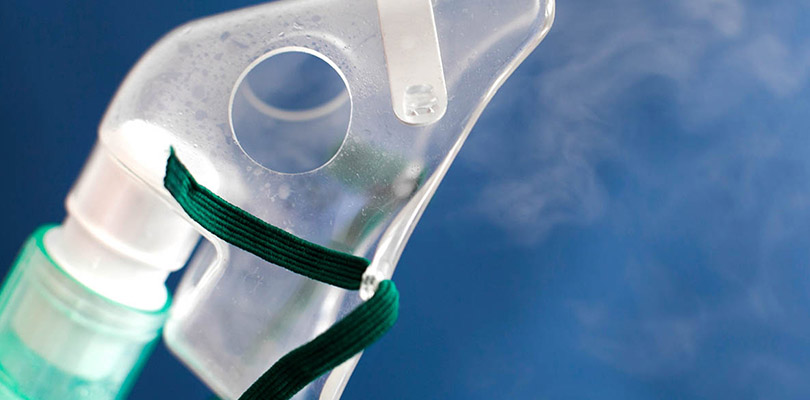Rescue Inhaler for COPD
If you have COPD, you probably know medication is often part of the treatment plan. Although currently COPD is not curable, medications can keep symptoms under control. Different classifications of medications are used to treat COPD, including rescue inhalers.
This article will go over what you need to know about having a rescue inhaler for COPD.
What Is a Rescue Inhaler for COPD?
A rescue inhaler for COPD is a medication taken to treat acute or sudden symptoms. Other types of COPD medications, such as steroid inhalers, are considered maintenance since they are not used for sudden symptoms.
Rescue inhalers got their name because they help or “rescue” you from symptoms. They are also sometimes called fast-acting or quick-relief inhalers.
It’s important not to confuse rescue inhalers with long-acting bronchodilator inhalers. Although they last longer, long-acting medications do not take effect as fast as rescue inhalers. Long-acting inhalers can play a role in a COPD treatment plan, but not for sudden symptoms.
Common rescue inhalers for COPD include:
- Albuterol (Ventolin, Proventil, ProAir HFA)
- Levalbuterol (Xopenex HFA)
- Ipratropium Bromide (Atrovent)
What Do Rescue Inhalers Do?
Rescue inhalers help decrease symptoms of COPD and make breathing easier. Symptoms of COPD occur due to damage to the airways. Inflammation and constriction of the airways develop. Typical symptoms of COPD include:
- Wheezing
- Shortness of breath
- Coughing
- Chest tightness
Rescue inhalers treat constriction or narrowing of the airways. The medication quickly relaxes the muscles of the airway, which allows them to dilate or open up. As the airways widen, it might be easier to expel trapped mucus and cough it up. More air is also able to move in and out of the lungs.
Typically, rescue inhalers start to work within a few minutes. They usually last from three to six hours. People with COPD that need to use their rescue inhaler on most days or more than once a day may need to talk to their doctor about using a long-term bronchodilator inhaler.
There are two main classifications of rescue inhalers for COPD that affect different receptors in the lungs, including beta 2-agonists and anticholinergic agents. Although the two classes of medications have a different physiologic process, they both relax the muscles that surround the airways.
Rescue inhalers for COPD can have side effects including:
- Nervousness
- Tremors
- Increased heart rate
- Headache
- Nausea
- Increased blood pressure
Although side effects can occur, they are usually not severe. Xopenex is a rescue inhaler that may be prescribed for people who have cardiac problems if they do not tolerate albuterol. Levalbuterol is chemically slightly different than albuterol and may cause fewer cardiac effects. It might be an option for a rescue inhaler if albuterol causes an increased heart rate.
Why You Need a Rescue Inhaler
Although not everyone with COPD needs to use a rescue inhaler daily, it’s helpful to have one prescribed and on hand to use if needed. In instances where symptoms develop, long-term bronchodilators or steroids will not relieve symptoms quickly.
If sudden symptoms are not treated promptly, it can lead to severe shortness of breath as the airways constrict. Eventually, breathing can become so impaired, respiratory distress develops. In addition, when someone with COPD feels short of breath, it can lead to panic. As a person panics and they tense their muscles, their breathing becomes even less efficient leading to decreased oxygen levels.
How to Use a Rescue Inhaler for COPD
It’s vital to use a rescue inhaler correctly. If you do not use the inhaler the right way, you will likely get less medication delivered to your lungs. Rescue inhalers for COPD come in different delivery devices including:
- MDI
- RespiClick
- Soft Mist Inhaler
Using an MDI Rescue Inhaler
The most common device is an MDI. More medication is delivered to the lungs if you take an MDI using an aerochamber/spacer. To use an MDI and spacer remember the following steps:
- Take the cap off the MDI.
- Shake the inhaler.
- Attach the MDI to the spacer. The MDI only attaches one way.
- Exhale all the air out of your lungs.
- Put your lips around the mouthpiece and make sure your lips are tightly sealed to prevent the medication from escaping.
- Press the MDI canister down.
- Inhale slowly and deeply. If the spacer makes a whistling sound, you are inhaling too quickly.
- Hold your breath for 10 seconds if possible, and then exhale. The breath hold helps your lung tissue absorb the medication more effectively.
- If you are prescribed a second puff, wait a minute before taking the next dose. After a minute, repeat steps four through eight.
It is vital to manage both COPD and bronchitis in order to prevent complications. Learn about the complications of the two conditions here.
Using a RespiClick Rescue Inhaler
A RespiClick delivers a different particle size of medication into the lungs and does not require the use of a spacer. Below is how to take a rescue inhaler for COPD via RespiClick
- Make sure the cap is closed before using the inhaler.
- Hold the RespiClick upright and open the cap until you hear a click.
- Breathe out all your air.
- Close your lips around the mouthpiece to make a good seal.
- Take in a deep, fast breath.
- Remove the inhaler from your mouth and hold your breath for 10 seconds if possible and then exhale.
- Check the dose counter on the back of the inhaler and make sure you received a dose. It should be down by one dose from the last time you used it.
- Close the cap.
- Repeat the steps above until you have taken the dosage prescribed by your doctor.
Using a Soft Mist Rescue Inhaler
A soft mist inhaler, also called a Respimat, is another device used to take a rescue inhaler for COPD. To use a soft mist inhaler, follow the steps below.
- Hold the soft mist inhaler upright and turn the transparent face in the direction of the arrow until you hear a click.
- Remove the cap.
- Breathe out completely.
- Place the inhaler in your mouth.
- Press the dose release button and breathe in slowly.
- If possible, hold your breath for 10 seconds, and then breathe out slowly.







